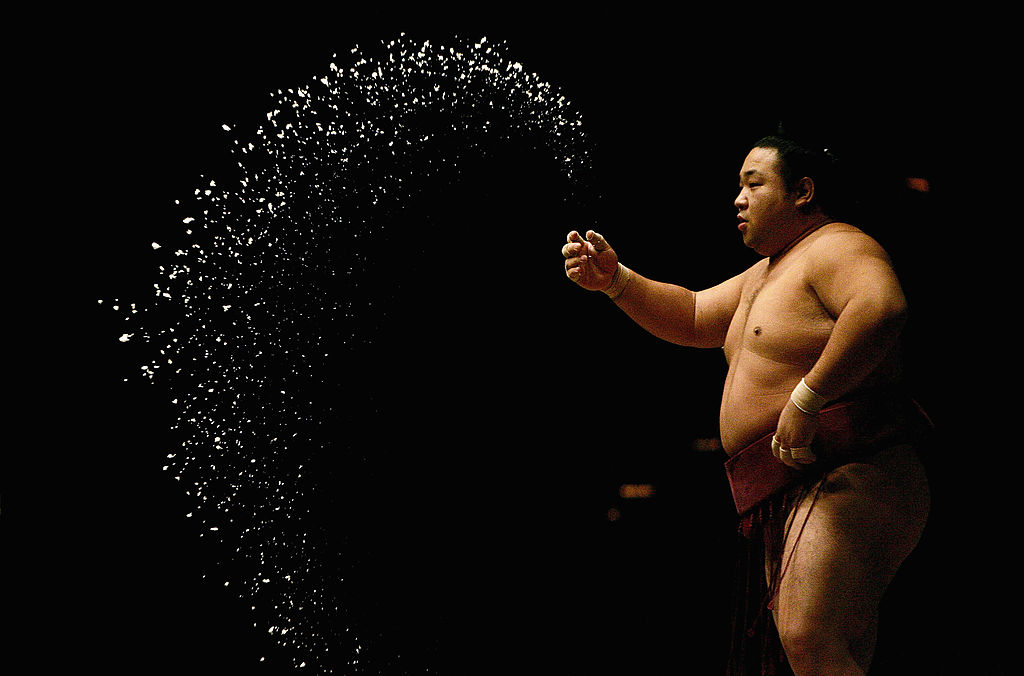For any young athletes harbouring ambitions of being a sumo wrestler, there was some good news this week. The Japanese Sumo Association (JSA) has decided to relax its height and weight requirements for young recruits, opening up the sport to those previously barred for being too short or too slight. Now all the beleaguered association needs to do is find them and keep them. Given that recruitment is just one of a host of problems the sport is facing, that won’t be easy.
The rule change is in response to a precipitous drop in the number of applicants to train to be a rikishi (wrestler) and perhaps join the fabled ranks of legendary Yokozuna (grand champions) that adorn the walls of the Ryogoku sumo stadium in Tokyo, the sport’s version of Wembley. This spring saw just 34 such aspirants: in 1992 there were 160. This is the latest evidence of a sad decline of a once proud sport, now struggling to find stay relevant and find an audience amongst Japan’s more internationalised fans, for whom baseball, sakka (football, men’s and women’s), rugby, and even handball have all left Japan’s notional national sport far behind.
The causes of sumo’s malaise are fairly easy to identify but very hard to address. Some are mundane, Japan’s catastrophic birth rate means there simply aren’t enough young people; and given that signing up for a sumo career means a gruelling apprenticeship under the whip (literally at times) hand of an exacting ‘master’, a diet of chankonabe (vegetable stew) that will transform your physique to the point where walking becomes difficult and late life health problems (rikishi live on average 20 years shorter than average) are inevitable, and with only the elite making decent money from it all, it’s unsurprising that take up is low.
Added to which, sumo’s reputation has been severely damaged in recent years, most notably in the annus horribilis of 2011 when 23 wrestlers were barred for bout fixing and one tournament was cancelled (out of shame seemingly). It turned out that the sacred ritual/sport with its links to the mystical core of Japaneseness, the noble art which elevated the spirit and preserved the moral code of the ancients, was, often at least, a sham. Hard up, low ranked, going nowhere wrestlers were throwing bouts for cash. It was, to put it mildly, disappointing.
Then there have been the hazing scandals starting with the tragic death of Takashi Saito in 2007 who was struck on the head with a beer bottle by his stablemaster Jun’ichi Yamamoto, who then ordered the other trainees to continue the attack. In 2008 the then prime minister Yasuo Fukuda demanded the JSA initiate reforms to prevent such an incident happening again. Yamamoto got six years in jail. No one has died since, but it seems likely that abuses continue, in May of this year a senior wrestler Krinofuji assaulted a junior stablemate with a frying pan and whipped him with a jump rope.
The domestic popularity of the sport has also undoubtedly been affected by an influx of foreigners, most notably Mongolians. At one time, the idea of a gaijin (foreigner) ever mastering the quintessentially Japanese discipline seemed absurd. It wasn’t until 1993 and the Hawaiian born Akebono that a foreigner made it Yokozuna level. That seemed to both break the spell and open the floodgates, as since then very few Japanese have managed it. In the last 25 years only one home grown rikishi has ascended to the top rank as opposed to five Mongolians and one from American Samoan.
This influx of new blood and a widening of the talent pool might sound like a good thing, and in some ways it has been, but it has also robbed sumo of much of its allure. For the Japanese, sumo used to act as reassurance that they were special, that parts of their culture were inaccessible and sacred. It no longer serves this function.
Sumo, sadly, is in trouble
For the culturally curious too, sumo’s appeal has palled. One of the first things I did on arrival in Japan 24 years ago was to attend a basho (tournament) for the thrill of witnessing something uniquely Japanese, something that connected the present to the unimaginably distant past (sumo is at least 1300 years’ old). But if the mystical art can be mastered by anyone, and if it is as rife with corruption as any other tawdry money dominated modern sport, it loses much of its lustre. I don’t think I’d be in such a rush if I were arriving today.
And if any sport needs some extra dimension, sumo does. As a spectator sport it certainly has curiosity value but is somewhat lacking in sustained interest. At its worst it can makes crown green bowls seem thrilling. It is repetitive and unsatisfying brief; there is the tedious foreplay, then a flurry of ‘action’, over before you have a sense of it, leaving you with a sense of anti-climax, and a lengthy wait until pretty much the same underwhelming spectacle is repeated.
Sumo, sadly, is in trouble, and tinkering with the entry qualifications looks like an inadequate response. What once seemed like a timeless cultural phenomenon now increasingly looks to be on borrowed time.







Comments